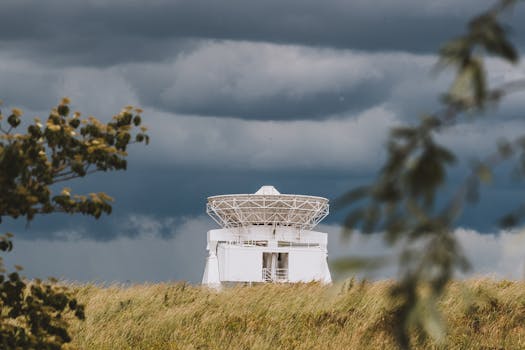Exploring GEO Satellites: A Comprehensive Guide to Geostationary Orbit Satellites
GEO satellites are a crucial part of modern satellite communications, providing a wide range of services including television broadcasting, telecommunications, and weather forecasting. In this article, we will delve into the world of GEO satellites, exploring their history, technology, and applications.

GEO Satellites: Introduction to Geostationary Orbit Satellites
GEO satellites, or Geostationary Orbit Satellites, are a type of satellite that orbits the Earth at an altitude of approximately 36,000 kilometers above the equator. At this altitude, the satellite’s orbital period matches the Earth’s rotational period, allowing it to remain stationary relative to a fixed point on the Earth’s surface. This unique characteristic makes GEO satellites ideal for a wide range of applications, including television broadcasting, telecommunications, and weather forecasting.
The concept of GEO satellites was first proposed by science fiction writer Arthur C. Clarke in 1945. However, it wasn’t until the 1960s that the first GEO satellite, Syncom 2, was launched. Since then, hundreds of GEO satellites have been launched, providing a vital link in modern satellite communications.
How GEO Satellites Work
GEO satellites work by transmitting and receiving signals to and from Earth-based stations. The satellite’s antenna is directed towards the Earth, and it receives signals from a network of ground stations. These signals are then amplified and re-transmitted back to Earth, allowing them to be received by a wide range of users. The satellite’s high altitude and stationary position allow it to provide a wide range of services, including television broadcasting, telecommunications, and data transmission.
The technology used in GEO satellites is highly sophisticated, with advanced communications equipment and solar panels providing power. The satellites are also equipped with propulsion systems, which allow them to maintain their position and altitude. The signals transmitted by GEO satellites are received by a network of ground stations, which are connected to a wide range of users, including television broadcasters, telecommunications companies, and government agencies.
Applications of GEO Satellites
GEO satellites have a wide range of applications, including television broadcasting, telecommunications, and weather forecasting. They are also used for navigation, providing location information and timing signals for a wide range of users. In addition, GEO satellites are used for earth observation, providing high-resolution images of the Earth’s surface and atmosphere.
One of the most significant applications of GEO satellites is in television broadcasting. Many television channels are broadcast via GEO satellites, providing a wide range of programming to users around the world. The satellites are also used for telecommunications, providing voice and data services to a wide range of users. Weather forecasting is another important application of GEO satellites, with many weather satellites providing images and data on weather patterns and storms.
Future of GEO Satellites
The future of GEO satellites is exciting, with many new technologies and applications being developed. One of the most significant trends is the development of high-throughput satellites, which provide faster data speeds and higher capacity. These satellites are being used for a wide range of applications, including broadband internet and mobile communications.
Another trend is the development of smaller, more efficient satellites. These satellites are being used for a wide range of applications, including earth observation and telecommunications. They are also being used for scientific research, providing valuable data on the Earth’s atmosphere and climate.
In conclusion, GEO satellites are a crucial part of modern satellite communications, providing a wide range of services including television broadcasting, telecommunications, and weather forecasting. With their high altitude and stationary position, they are ideal for a wide range of applications, and their technology is highly sophisticated. As new technologies and applications are developed, the future of GEO satellites looks exciting, with many opportunities for growth and innovation.



